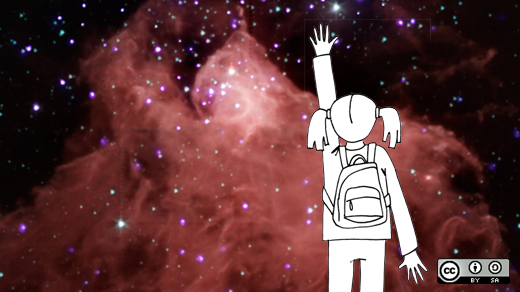There was a time when visiting a planetarium involved more than turning on your computer. I have long been fascinated with the night sky, but I live an hour's ride from the nearest planetarium. Luckily, I've discovered two open source applications that bring the stars to me: Stellarium and Celestia.
Stellarium
If you're a classroom teacher trying to provide a planetarium experience for your students, then you'll be glad to know about an open source software project and application called Stellarium.
I first heard of Stellarium about 10 years ago, when it was part of the K12 Linux Terminal Server distribution on Fedora. At the time, I thought it was a unique software offering, and I believe that still holds true today. Stellarium is open source and licensed with GNU General Public License version 2.0. It runs on Linux and other operating systems and has very modest requirements. It shows a realistic sky in 3D, just like what you'd see with the naked eye, binoculars, or a telescope. Its default catalog has records on more than 600,000 stars. The code is available on Launchpad and SourceForge. The Stellarium Development team maintains an IRC channel and has a Twitter account you can use to chat with them.

Original photo by Frank Noschese, CC BY- SA 4.0
French programmer Fabien Chéreau developed Stellarium; he launched the project in the summer of 2001. It is available in RPM for Fedora and in .deb files for Ubuntu and Debian. An entire developer team produces Stellarium with the help and support of many people and organizations. And the Stellarium Wiki houses a complete user guide.
The Stellarium Wiki contains a great deal of information about how the program might be used in the classroom. In addition I have found a Wikispace developed by teachers in North Carolina that does a nice job of introducing Stellarium in a United States educational setting. Here is another classroom example of how to use Stellarium.
Stellarium is even available on mobile platforms. It is a fully featured planetarium for your phone or tablet.
Celestia
Another interesting open source application that allows users to explore the known universe is Celestia. Celestia runs on Linux, and you can download it from its developers or install it from repositories on Fedora and Ubuntu. Celestia is licensed with the GNU General Public License and can run on many different platforms. As Wikipedia explains:
Celestia is a 3D astronomy program created by Chris Laurel. The program is based on the Hipparcos Catalogue (HIP) and allows users to travel through an extensive universe, modeled after reality, at any speed, in any direction, and at any time in history. Celestia displays and interacts with objects ranging in scale from small spacecraft to entire galaxies in three dimensions using OpenGL.
For a list of Celestia's educational uses, refer to the Celestia Motherlode. A Celestia preview is also available on YouTube.
Science
A collection of articles on the topic of open source software, tools, hardware, philosophies, and more in science.







7 Comments